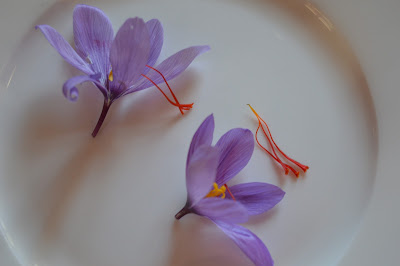A parcel arrived from my sister last week.
It contained a name-plate for our new house in the Lot et Garonne, with stylised letters burnt into a piece of Tasmanian King Billy pine.
It was a wonderful gift.
I attached it to the side of the barn, by the entry to the house.
I chose Ellesmere as the name of our place in memory of my Uncle Frank's house.
I called him Uncle Frank though he wasn't really my uncle, but a good friend of my grandfather's.
It was the 1960's and Frank Roberts, a retired surveyor, lived in a sprawling country house on the outskirts of Chinchilla, in south-west Queensland.
Frank regularly made the five-hour journey east to Eumundi, where my papa and aunt lived on a little dairy farm.
Eumundi is in the hinterland of the Sunshine Coast.
He'd turn up on a Sunday morning in his sky-blue Morris Minor, with his battered old suitcase on the back seat and Belle, his kelpie-dog, beside him in the front.
On a couple of occasions, Aunty Viv took me to visit Frank in Chinchilla. We would go in her old Volkswagen beetle and stop half-way for lunch, eating sandwiches she had prepared.
 |
| "Viv"... overlooking Oyster Bay at Stansbury SA 2014 |
I had Viv restored until it looked like it had just come off the assembly line in 1955.
But back to Frank's place in Chinchilla.
Bordering a dry creek bed, it sat amongst mallee and gum trees growing in the red sand of western Queensland.
His house had a wide veranda, off which tall doors opened to many rooms. But one was off-limits to me. It was Frank and Ruth's bedroom, now locked and preserved as a shrine to his dead wife.
Frank's house contained many pieces of colonial Australian and English antique furniture and paintings.
There was a huge fireplace which warmed the house in winter. Belle would lie on a tattered rug in front of it. There was an old 1940's radio in the corner of the lounge room.
Above the hearth, an array of antique firearms, shotguns, were displayed.
Frank was an austere and upright man, somewhat eccentric. Though Australian, he conducted himself like a landed English gentleman.
He smoked a pipe.
I remember the wonderful, aromatic scent of his pipe tobacco. It permeated the house.
Frank was very fond of me.
He would sit by my bed at night, trying to comfort me as I laboured to breathe with childhood asthma.
It was only later that I learnt his beautiful wife Ruth, a Hull, had died in middle age of an asthma attack.
Frank never remarried. I think his heart was broken.
I never knew why Frank called his house Ellesmere, but I am proud to adopt the same name for mine.






















































